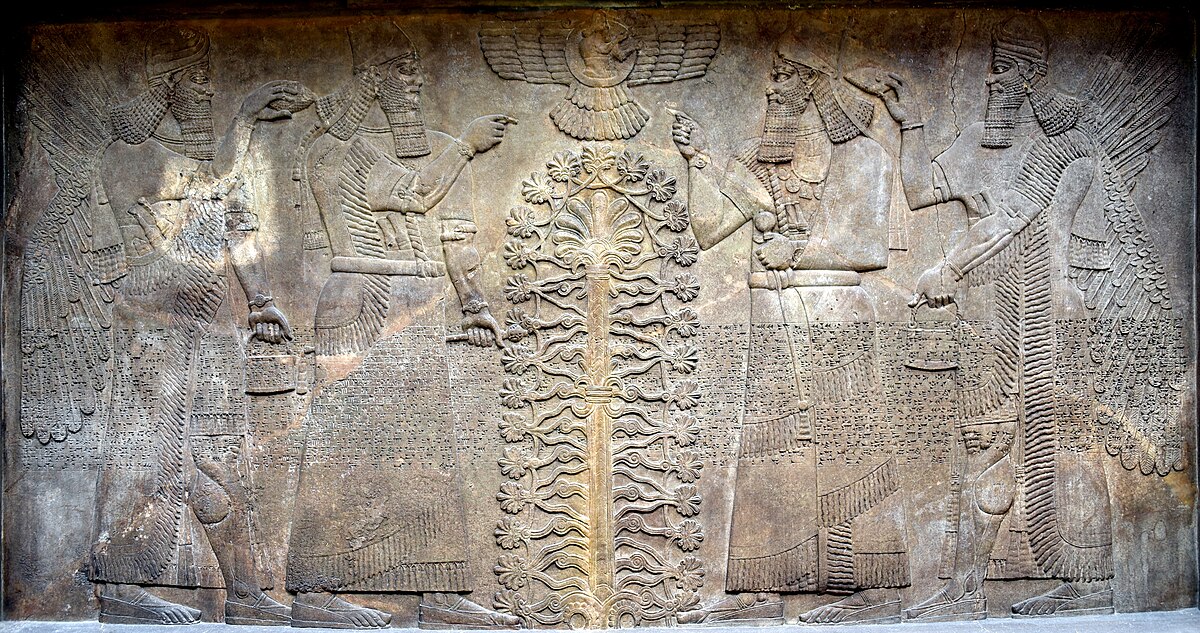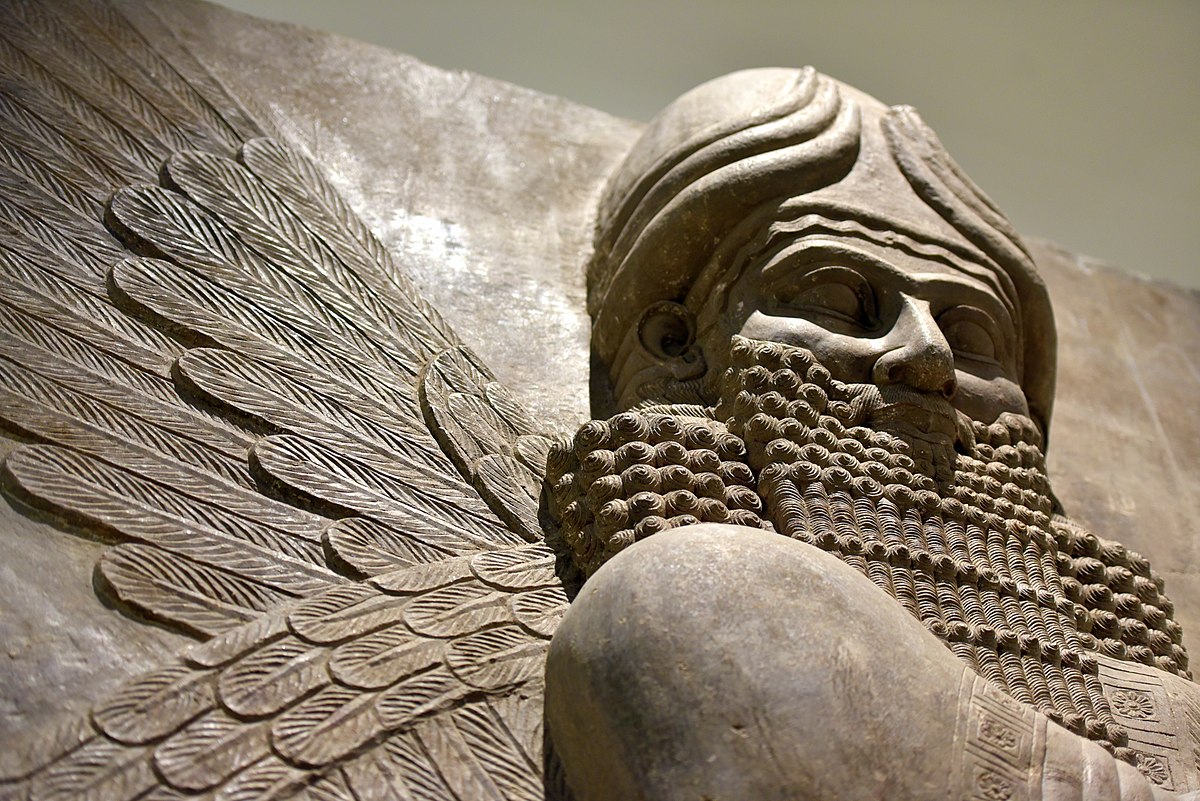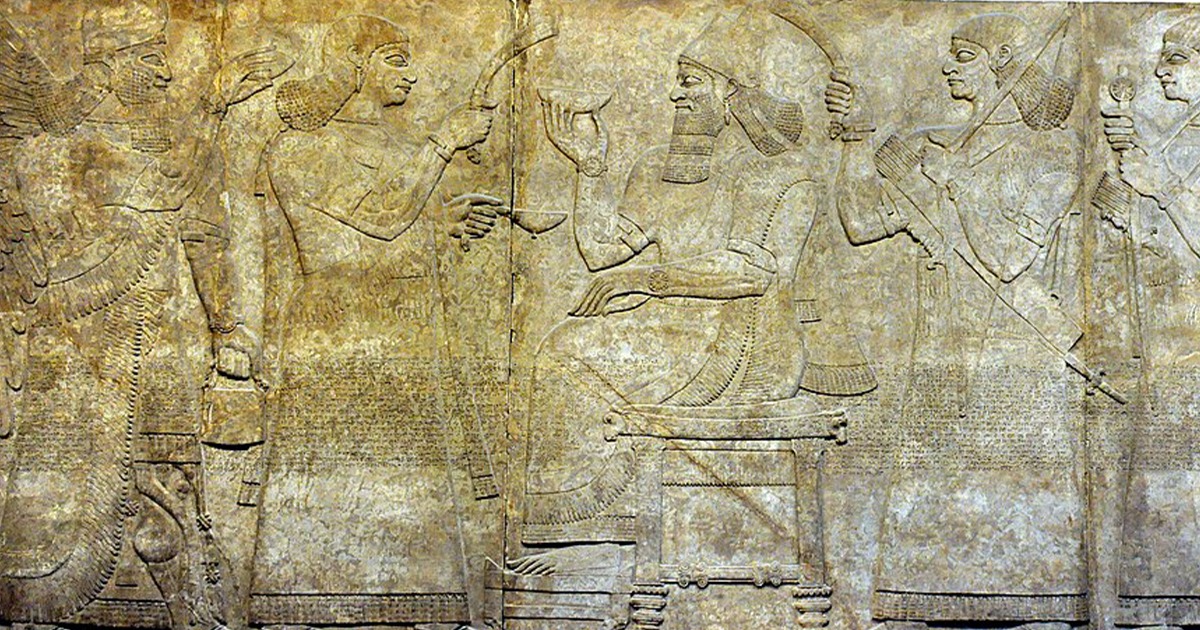Among the oldest stories of the Tigris and Euphrates there is a recurring presence: the Apkallu. They appear at thresholds and gateways, stride along palace walls, and step in and out of myths where gods and mortals still share the same streets. Sometimes they are fully human yet winged; sometimes they wear the sharp beak and sweeping feathers of a bird. Always, they carry a reputation for wisdom. In the earliest days they teach; later, they guard. Their legacy lies in the idea that knowledge arrives as a gift and then must be kept safe.
It helps to picture the setting. City-states are rising, canals cross the plains, clay tablets stack in temple rooms, and scribes begin to fix the memory of a people in tidy wedges of cuneiform. In that world the Apkallu are the sages sent by the god Ea (Akkadian) or Enki (Sumerian), patrons of craft and cunning. They guide first rulers, set festivals in order, and show people how to manage water, make lists, and keep the gods on side. Later tradition will call the earliest of them divine and the later ones mortal—still wise, but bound to human limits.
Before the Flood: teachers at the dawn of cities
Some lists speak of seven sages before the Flood, each paired with a king from Sumer’s first dynasties. The names vary a little between tablets, yet one figure keeps returning: Uanna, also called Adapa. He is the culture hero who “completed the plans of heaven and earth”—the one who knew the language of ritual and the grammar of power. With him stand others—Uannedugga, Enmedugga, Enmegalamma, Utuabzu—whose roles are sketched in short phrases: they laid foundations, set rules, instructed temples, and taught crafts. These notes read like headings in a handbook; the texture of life is left for the imagination.
Imagery from later centuries preserves a memory of their presence. The sages hold a small bucket in one hand and a cone in the other. The gesture looks simple, almost casual, but it signals purification—sprinkling lustral water to keep chaos at bay. Seen in sequence across a wall, the movement has a rhythm: draw from the bucket, touch the cone to the tree, to the king, to the threshold. Repeat. Civic order here is not an abstract idea; it is a daily practice, made visible in stone.

The flood as a hinge in time
Mesopotamian tradition loves clear boundaries, and the great flood is the sharpest of them all. Before the waters, the Apkallu move openly among people; after, they withdraw. In their place come human scholars—men of learning who inherit a fraction of divine knowledge and spend their lives copying, collating, and advising rulers. It is an elegant solution to a problem that every civilisation faces: how to keep a golden age from evaporating into nostalgia. You do it by embedding memory in institutions—libraries, scribal schools, rituals—and by giving those institutions guardians with names and stories.
With the shift from divine to mortal sage, the posture of the Apkallu also changes. Earlier, they are instructors; later, they watch over what has been built. You can see this in the architecture of power: on palace walls from the early first millennium BC, the bird-headed Apkallu flank doorways, stand behind the king, and repeat their purifying gesture along corridors. The message is straightforward. The king rules by divine sanction, the city endures by ritual maintenance, and wisdom stands sentry where decisions are made.
Stone, ritual, and the language of protection
The art of Assyrian capitals translates theology into masonry. Reliefs from Nimrud and Khorsabad show Apkallu in procession, feathers crisply cut, robes patterned with rosettes, bracelets gleaming with carved rosette bosses. Their bodies face left or right in mirror pairs, framing a sacred tree or a royal figure. The composition is strict, almost musical; to walk the length of a throne room is to pass through alternating chords of image and meaning.
Texts back this up. Ritual instructions speak of small figurines—wood, clay, occasionally stone—buried beneath thresholds or placed inside walls. Each figure has a slot in the plan, each receives an incantation, each is aligned with a god’s sphere of influence. The house becomes a map of protection. None of this feels accidental. In a landscape prone to droughts and floods, to dust-laden winds and sudden violence, the politics of stability needs its liturgy.
What the bucket and cone actually do
Scholars debate the exact identification of the “cone” (some suggest a fir or pine cone; others, part of a date palm). Whatever the species, the gesture is constant. The bucket holds consecrated liquid. The cone sprinkles that liquid on king, tree, threshold, or god. It is a choreography of blessing. Iconography repeats it so insistently that even a casual visitor to a museum begins to feel the action’s weight. Sprinkling is not decoration; it is how one keeps the world stitched together.
The seven names and the long memory of scribes
Lists of the earliest sages vary but usually preserve seven pre-diluvian figures. Later compilers add four mortal successors after the Flood, linking legendary origins to historical dynasties. The point of the lists is continuity. Wisdom does not vanish with the water; it moves through people who copy texts, maintain calendars, constrain the gods with liturgy, and advise rulers on auspicious days. If you spent a lifetime pressing a reed stylus into clay, that is how you would want the world to see you: part of an unbroken chain from the first teacher to your own desk.
Adapa stands out here because other myths bend towards him. One story tells how Ea made him wise but not immortal; another shows him refusing the food of life in heaven, tricked by caution. Wisdom without immortality is an ancient moral: knowledge elevates, but it does not excuse you from human limits. In a culture that measured worth by record-keeping as much as by conquest, this was a fitting hero.

Why the bird-head?
Half the charm of the Apkallu lies in the way they resist simple classification. A bird-headed figure suggests movement between realms—earth and sky—as naturally as a messenger moves between courts. Birds, in Mesopotamian omen lore, are readers of signs; their flight lines sketch the will of the gods. Add wings to a human form and you have a being that crosses the limits ordinary people must respect. It is not a zoological claim; it is a statement about vocation. A sage who moves between human and divine spheres should look like someone bred for crossing borders.
Visually, the beak sharpens the profile and sets a firm, forward intention. The feathers add texture and light, catching shadows in the carved ridges. A row of Apkallu along a wall creates a kind of visual breeze—an impression of movement even when the figures stand still. You can see why palace architects liked them. They dignify a space without overwhelming it; they imply power without turning into blunt propaganda.
After Assyria: what remains when empires pass
Empires fall; symbols travel. The great courts of Nineveh and Nimrud are long gone, but their art took new lives in museums and in scholarship. Apkallu figures sit in glass cases or stride across reconstructed galleries. Clay tablets record their names in tidy lines. Academic catalogues keep track of where each relief ended up, what palace room it once adorned, and which excavation season brought it to light. The sages’ power shifts from ritual function to cultural memory, yet the basic idea survives: civilisation is taught, then safeguarded.
It is tempting to search for echoes far beyond Mesopotamia—winged guardians at gateways, semi-divine teachers, ritual sprinkling carried into later traditions. Some echoes are almost certainly convergences rather than direct borrowings; symbols are good travellers. The point remains: once you have met the Apkallu, you start spotting their family resemblance in places you did not expect.
Why they still grip the imagination
They do not shout. Their faces—human or avian—are composed, even calm. The drama is in the gesture and in the repetition. Anyone who has worked to keep a project alive knows that feeling: results depend on steady care, not single moments of brilliance. That, more than the wings or the beaks, may explain the Apkallu’s hold on modern visitors. We recognise in them a picture of maintenance as a virtue.
There is also the matter of scale. The Apkallu stand at human height or larger, close enough that you could speak to them if stone could answer back. They are not remote gods; they are near at hand, stationed at the places where decisions are made and guests are received. That intimacy makes the myths feel less distant. A visitor in an Assyrian palace would have passed between them daily, catching the same glint of chiselled feathers that we see today under museum lights.

Where to meet them now
Walk the Mesopotamian galleries in London, Paris, Berlin, or New York and you will find them: rows of reliefs from the Northwest Palace of Ashurnasirpal II at Nimrud; panels from the palace of Sargon II at Dur-Šarruken; fragments carried from Nineveh after the nineteenth-century digs. The detail remains crisp despite the miles travelled. You can stand close enough to see the drill work in a rosette, the fine crosshatching of feathers, and the shallow grooves that once held pigment.
Set in that context, the Apkallu feel both ancient and immediate. They speak to an era that took ritual seriously and understood knowledge as a public good. They also model a habit of mind worth keeping: build the storehouses of memory, then guard them with care.
What the Apkallu teach without saying a word
If there is a lesson here, it is not about miracles or lightning-bolt revelations. It is about the disciplines that preserve a fragile order—copying texts accurately, marking the seasons, cleaning the channels, maintaining the doors. The sages stand with bucket and cone to remind the watcher that society endures by small faithful acts. In a way, the bird head is a red herring; the heart of the image is the hand that sprinkles.
And so the stories persist. The seven who came before the Flood set the pattern; their human successors carry it forward. The palaces rise and fall, the tablets crack and fade, but the gesture remains readable. The Apkallu are still at the gate, and the gate is still worth guarding.
